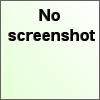uniutils

* uniname defaults to printing the character offset of each character, its byte offset, its hex code value, its encoding, the glyph itself, and its name. It may also be used to validate UTF-8 input. * unidesc reports the character ranges to which different portions of the text belong. It can also be used to identify Unicode encodings (e.g. UTF-16be) flagged by magic numbers. * unihist generates a histogram of the characters in its input. * ExplicateUTF8 is intended for debugging or for learning about Unicode. It determines and explains the validity of a sequence of bytes as a UTF8 encoding. * utf8lookup provides a handy way to look up Unicode characters from the command line. * unireverse reverse each line of UTF-8 input character-by-character.
Latest reviews
4
Useful, especially the uniname interactive mode. If it had a gui version, it'd be 5 stars.